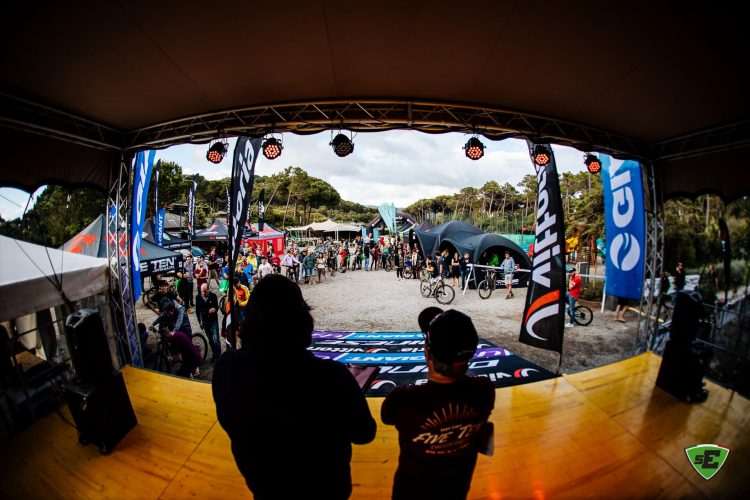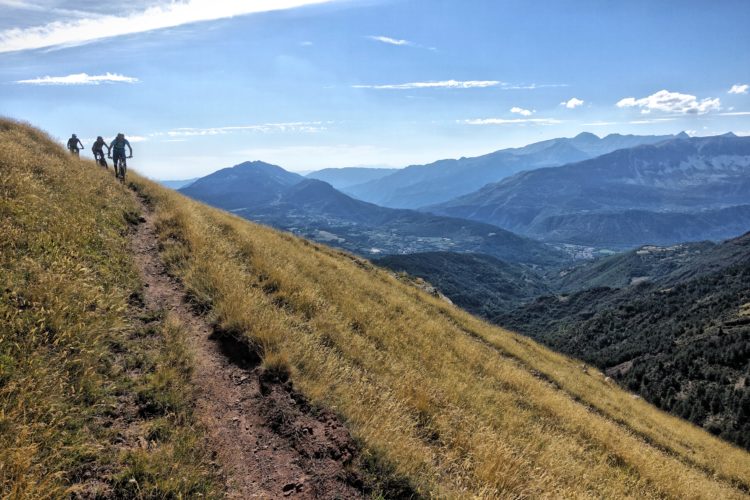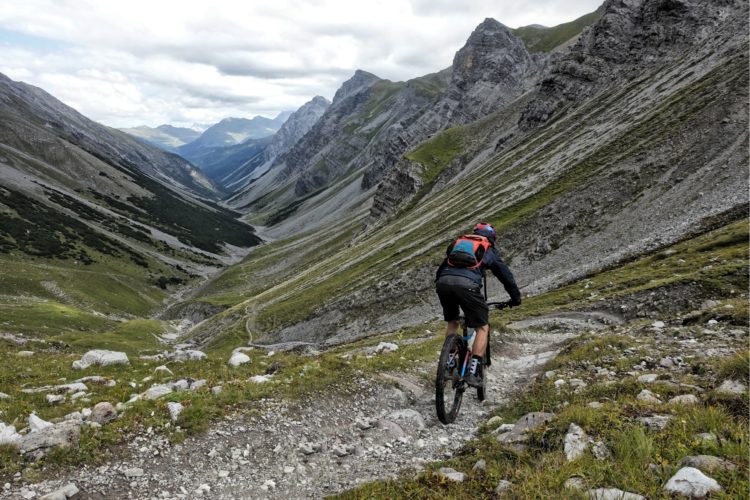
The Alps are easily one of the most legendary mountain ranges on the entire planet. Even if you’ve never been there, simply uttering the name brings to mind jagged, rocky peaks, glaciated couloirs, scree-filled slopes, and innumerable miles of rugged singletrack.
Ever since I was a child I’ve dreamt of visiting the Alps, and this summer I finally had the chance! While riding in the mountains can be a remarkably similar experience no matter where in the world you ride, I couldn’t help but notice the many differences between mountain biking in the Alps, and riding near my home in the Rockies.
1. Chairlifts, gondolas, and cable cars can whisk you from the valley floor to the high alpine in minutes.

While you can find plenty of resorts that offer lift-accessed mountain biking in the Rockies, the lifts–at least, the ones open for mountain biking–don’t generally climb as high up the mountains as they do in the Alps. In Lenzerheide, Switzerland, we took a combination of a gondola and a cable car, which delivered us from the valley floor to one of the highest ridges in the mountain range in a matter of minutes. Almost instantly, we went from our hotel to way, way above tree line!
Once there, we weren’t limited to mere bike park trails. Instead, this uplift allowed us to access rugged, high alpine singletrack heading off into the backcountry, saving us the arduous chore of pedaling thousands of feet up a gravel road to get there.
2. The mountainsides–and trails–are steep, and the peaks are rugged.

While the Rockies are no joke, the mountainsides and singletrack trails found in the Alps are, on the average, drastically steeper! Prepare to drop straight down the fall line as you plummet down a rutted singletrack to the valley far, far below.
For instance, the mountains around Morzine, France are littered with illicitly-built “hardcore freeride trails,” as my local guide, Jo, put it. While the building of these trails might not have been legal, unless there’s a sign saying that bikes aren’t allowed, the actual riding of these trails is fair game! Toward the end of day 1 we dropped into one of the “hardcore freeride trails,” and it was one of the steepest stretches of dirt I’ve ever ridden! But aside from a few dabs and scoping a few sections before I dropped in, I made it through unscathed. At the bottom I turned to Jo and said, “that was one of the easiest ‘hardcore freeride’ trails, wasn’t it?”
“Yes, yes it was,” he responded with a knowing smile.

When it comes to the peaks of the mountains themselves, they are, if anything, even more rugged and formidable, on average, than the peaks in the Rockies. I never thought that a mountain range would make my home mountains look cute, cuddly, and inviting, but the Alps are undoubtedly on a whole ‘nuther level!
3. You’re constantly passing mountain huts and small villages, and are never far away from civilization.

When riding through the alps you’ll undoubtedly pass several mountainside huts serving food and drink, or pedal through small farming villages nestled high up in the hills–you’re never far away from civilization. The upshot? If you get thirsty mid-ride, swing by the alpine hut for a quick beer, or maybe some wine and cheese. Hungry? Grab a sandwich on the side of a mountain!
4. Interconnecting trails and roads are all over the place–a massive web.
Unlike some of the epic point-to-point trails found in the Rockies, where you can sometimes go for 10 or 15 miles without meeting another trail, the network of singletrack, doubletrack, and roads found in the Alps is very dense, interconnected, and complex. Oftentimes one continuous descent will require a near-constant switching from one trail to another to the next, making it difficult to be sure that you’re taking the right turn at every Y in the trail… and not the wrong one.
As a result of this complexity, signage is minimal. What a European considers to be a well-signed, easy-to-follow trail would barely qualify as a sign of any sort in the States. If you want to keep from getting lost–or at the very least, if you want to successfully locate the trail that all the locals are raving about–hire a local guide to remove the guessing game from the equation.
5. Most of the trails outside of the bike park are ancient social trails.

Apparently building purpose-built mountain bike singletrack outside of a lift-serviced bike park isn’t a thing in the alps. For that matter, as far as I can tell, it doesn’t seem like building any new, legal singletrack–purpose-built, multi-use, whatever–outside of DH bike parks is being done in the Alps at large.
In the Rockies, trail clubs and advocacy groups are constantly striving to build new trails–big mountain trails, trails close to town, new sections of epic long-distance trails like the CDT–you name it, we’re trying to build it. This new construction might not happen fast, but we’re constantly adding to our trail inventory.
In contrast, in the Alps, essentially every backcountry singletrack trail is an ancient social trail, most of which had their origins as a historic thoroughfare to access a mountainside farm, village, or some other point of interest. Aside from DH tracks, trail building doesn’t seem to be a thing here.



















